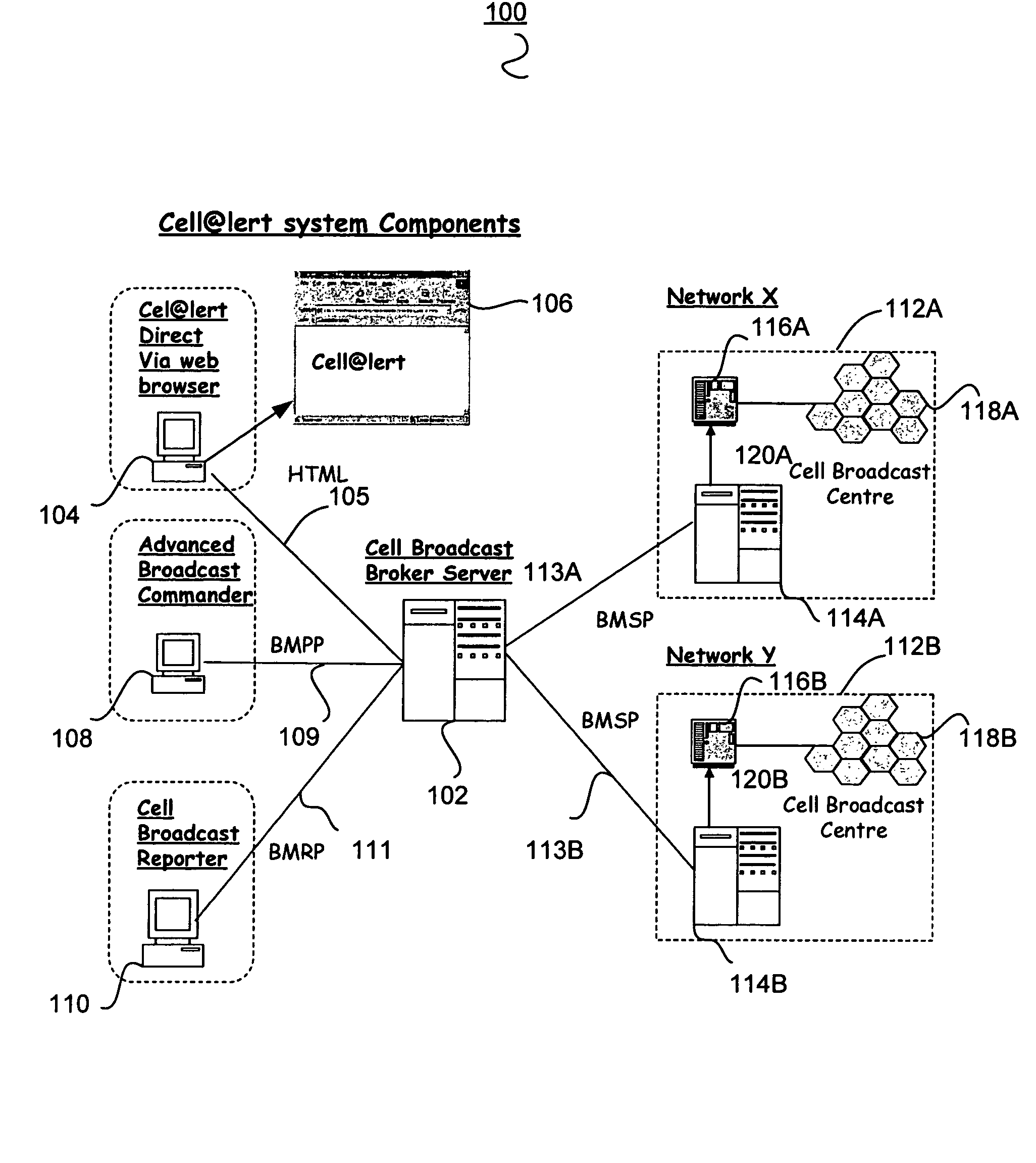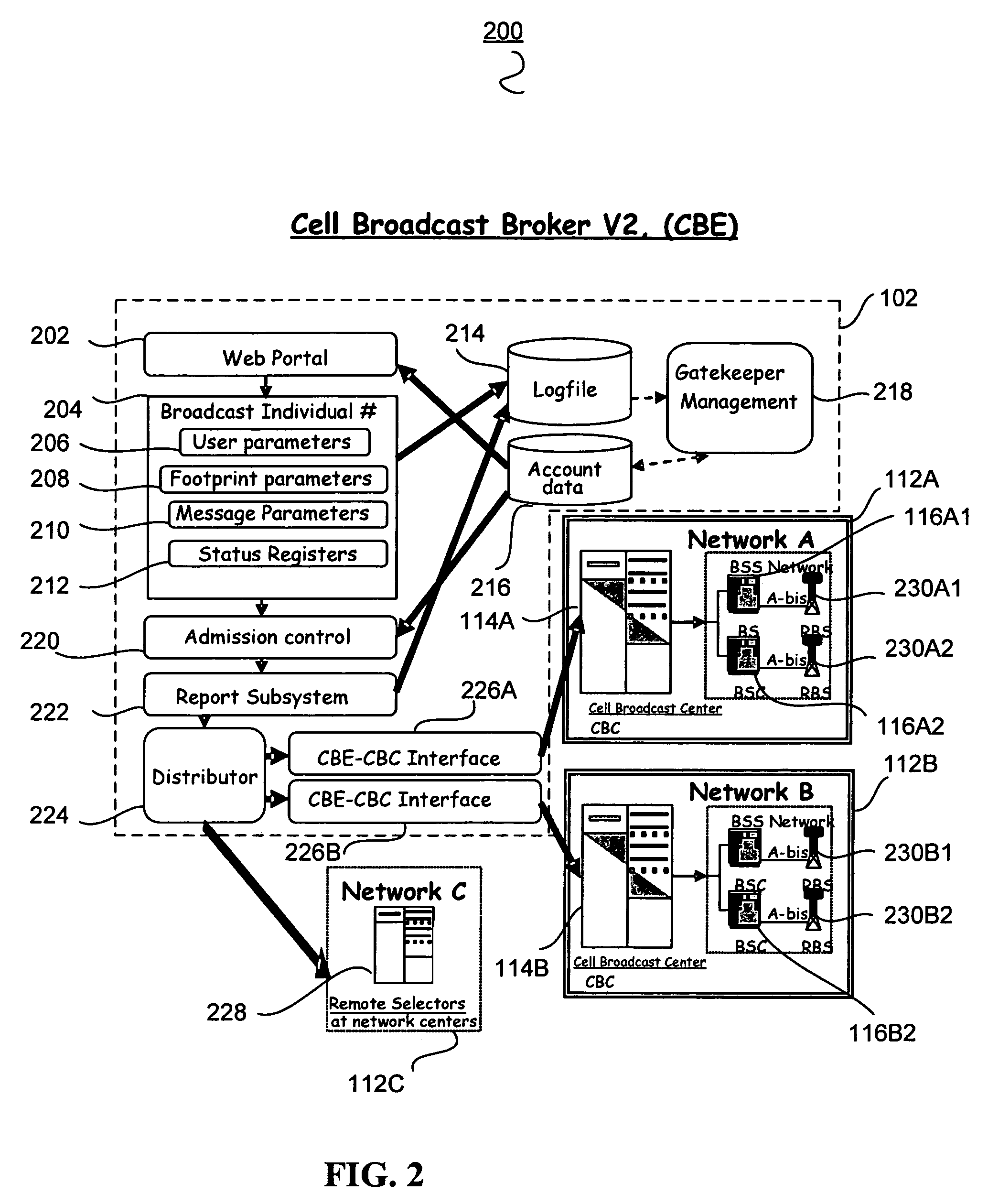Public service message broadcasting system and method
a public service message and broadcasting system technology, applied in the field of emergency message broadcasting systems, can solve the problems of limited access, sms systems and technology have significant technical limitations, and existing systems do not provide location-based notification or broadcast messages
- Summary
- Abstract
- Description
- Claims
- Application Information
AI Technical Summary
Benefits of technology
Problems solved by technology
Method used
Image
Examples
Embodiment Construction
[0040]The following description is merely exemplary in nature and is in no way intended to limit the invention, its application, or uses.
[0041]The public service message location broadcasting system (PLBS) according to one or more embodiments of the invention provide for an improved system and method for public service broadcast messaging. A public service message location broadcasting system (PLBS) operator provides a Broadcast Agent Web Portal or Webpage or other similar Graphical User Interface (GUI), implementation and maintenance of the networks' cell-broadcast messaging components, networks and platforms, administration and operation of the public service message location broadcasting system, and interfaces to local telecommunication service providers including mobile unit service providers.
[0042]According to one embodiment in the event of a serious public emergency, a short text message is sent over the location broadcast channel. A mobile unit or Broadcast Agent phone, which...
PUM
 Login to View More
Login to View More Abstract
Description
Claims
Application Information
 Login to View More
Login to View More - R&D
- Intellectual Property
- Life Sciences
- Materials
- Tech Scout
- Unparalleled Data Quality
- Higher Quality Content
- 60% Fewer Hallucinations
Browse by: Latest US Patents, China's latest patents, Technical Efficacy Thesaurus, Application Domain, Technology Topic, Popular Technical Reports.
© 2025 PatSnap. All rights reserved.Legal|Privacy policy|Modern Slavery Act Transparency Statement|Sitemap|About US| Contact US: help@patsnap.com



